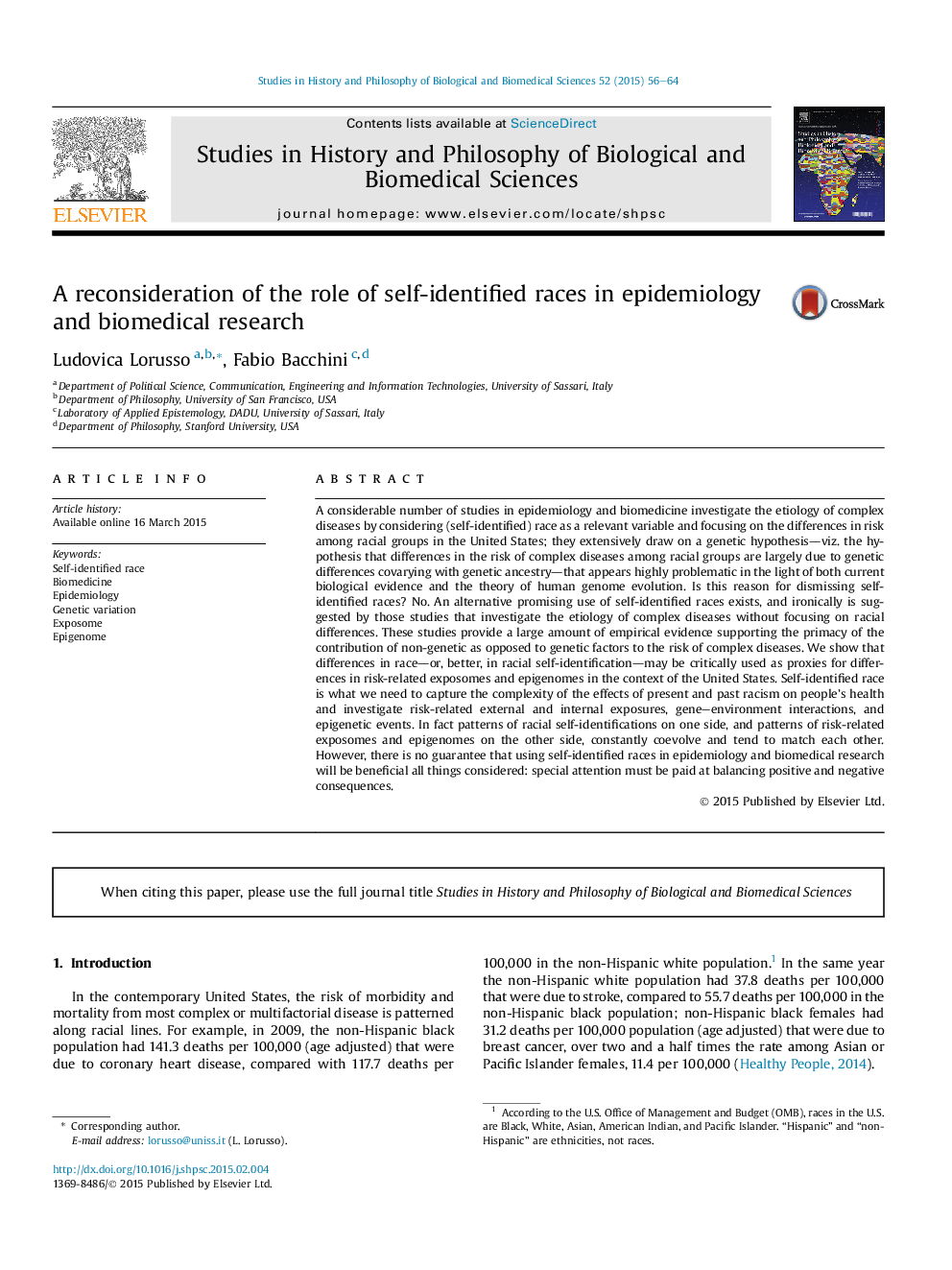| کد مقاله | کد نشریه | سال انتشار | مقاله انگلیسی | نسخه تمام متن |
|---|---|---|---|---|
| 1161650 | 1490513 | 2015 | 9 صفحه PDF | دانلود رایگان |
• We explore the role of race in biomedicine and epidemiology.
• We reject the use of race as a proxy for a genetic component to a complex disease risk.
• Self-identified race and exposomic and epigenomic variation tend to match each other.
• Self-identified race captures the effects of present and past racism on people's health.
A considerable number of studies in epidemiology and biomedicine investigate the etiology of complex diseases by considering (self-identified) race as a relevant variable and focusing on the differences in risk among racial groups in the United States; they extensively draw on a genetic hypothesis—viz. the hypothesis that differences in the risk of complex diseases among racial groups are largely due to genetic differences covarying with genetic ancestry—that appears highly problematic in the light of both current biological evidence and the theory of human genome evolution. Is this reason for dismissing self-identified races? No. An alternative promising use of self-identified races exists, and ironically is suggested by those studies that investigate the etiology of complex diseases without focusing on racial differences. These studies provide a large amount of empirical evidence supporting the primacy of the contribution of non-genetic as opposed to genetic factors to the risk of complex diseases. We show that differences in race—or, better, in racial self-identification—may be critically used as proxies for differences in risk-related exposomes and epigenomes in the context of the United States. Self-identified race is what we need to capture the complexity of the effects of present and past racism on people's health and investigate risk-related external and internal exposures, gene–environment interactions, and epigenetic events. In fact patterns of racial self-identifications on one side, and patterns of risk-related exposomes and epigenomes on the other side, constantly coevolve and tend to match each other. However, there is no guarantee that using self-identified races in epidemiology and biomedical research will be beneficial all things considered: special attention must be paid at balancing positive and negative consequences.
Journal: Studies in History and Philosophy of Science Part C: Studies in History and Philosophy of Biological and Biomedical Sciences - Volume 52, August 2015, Pages 56–64
